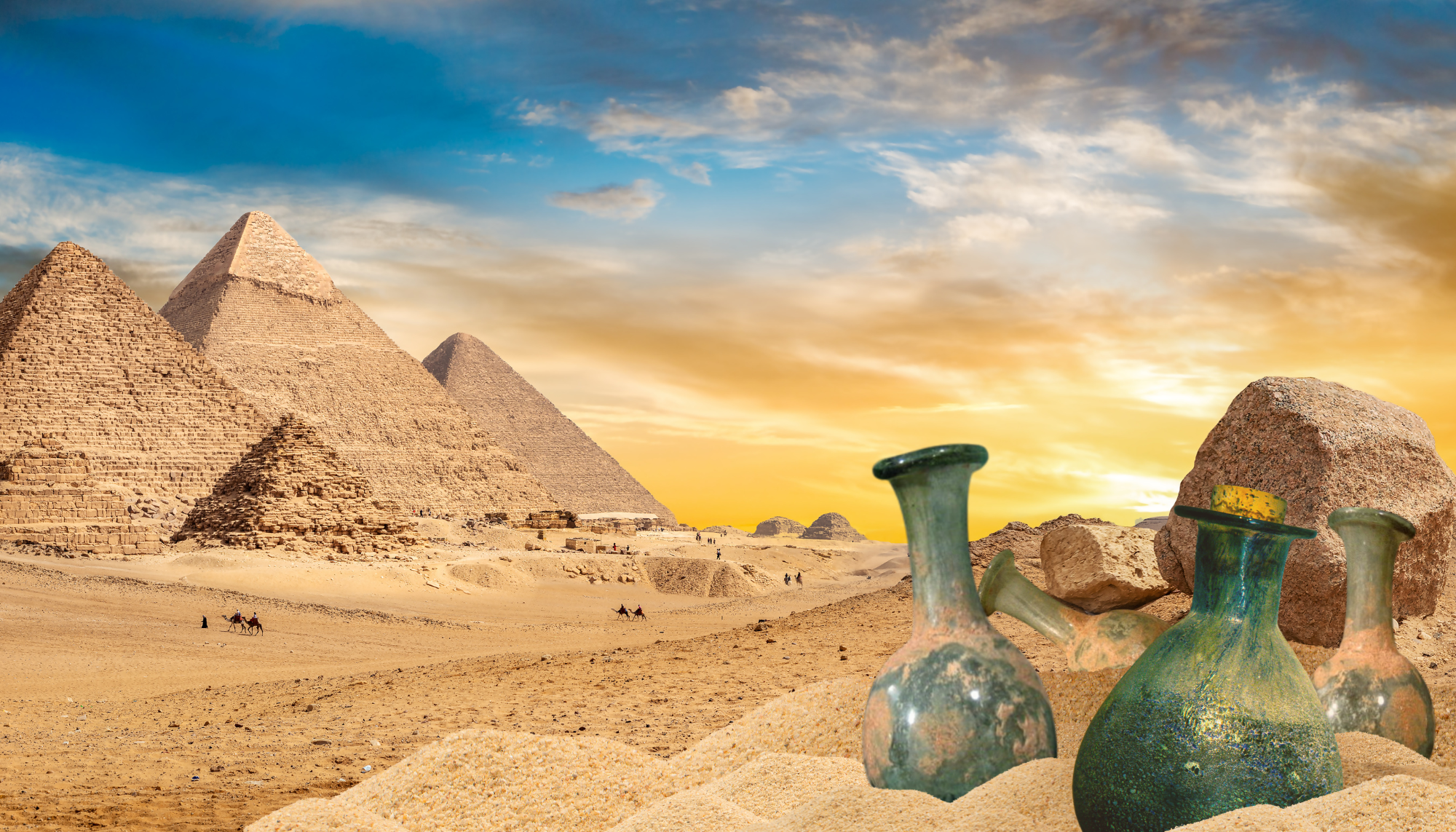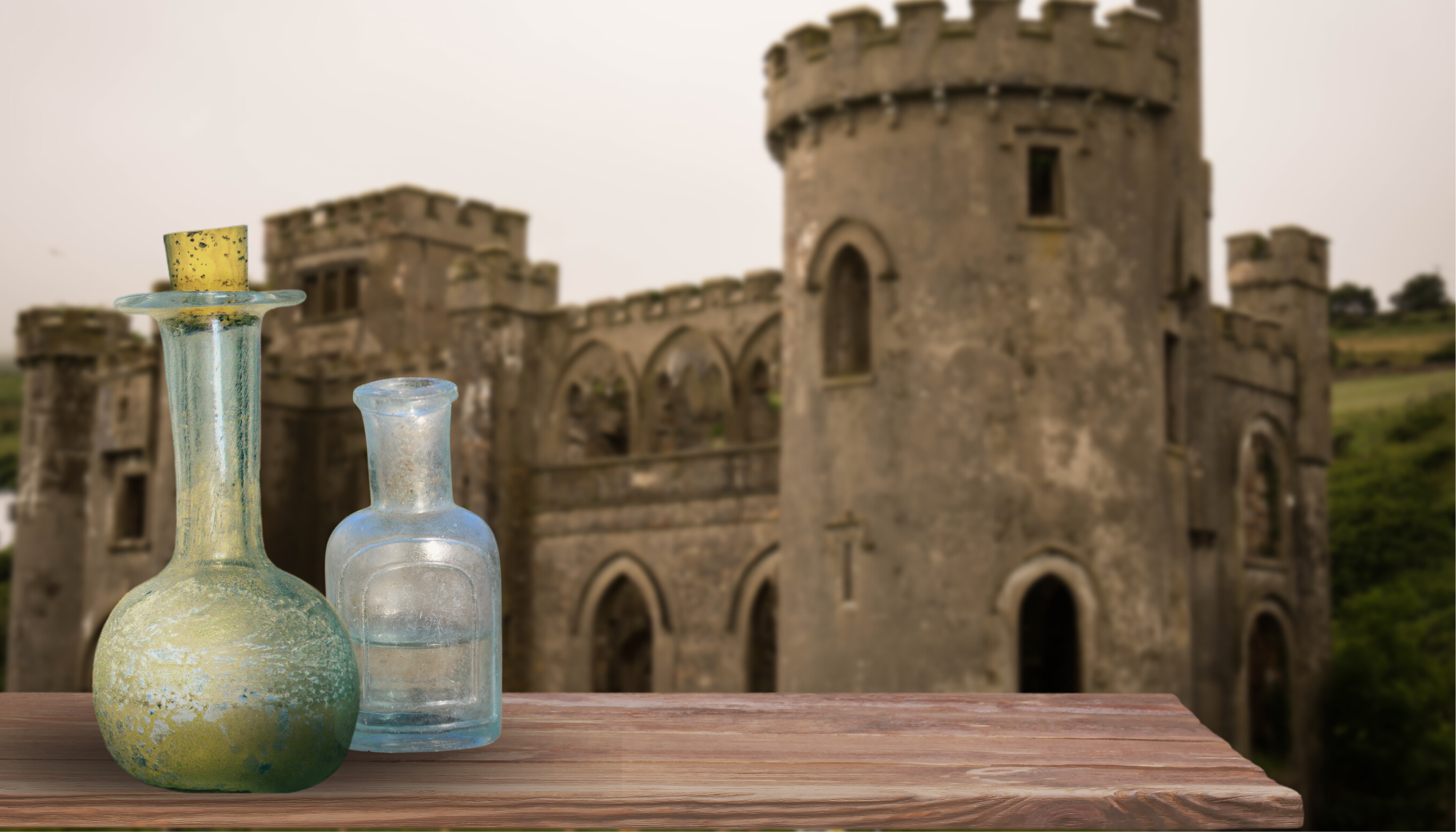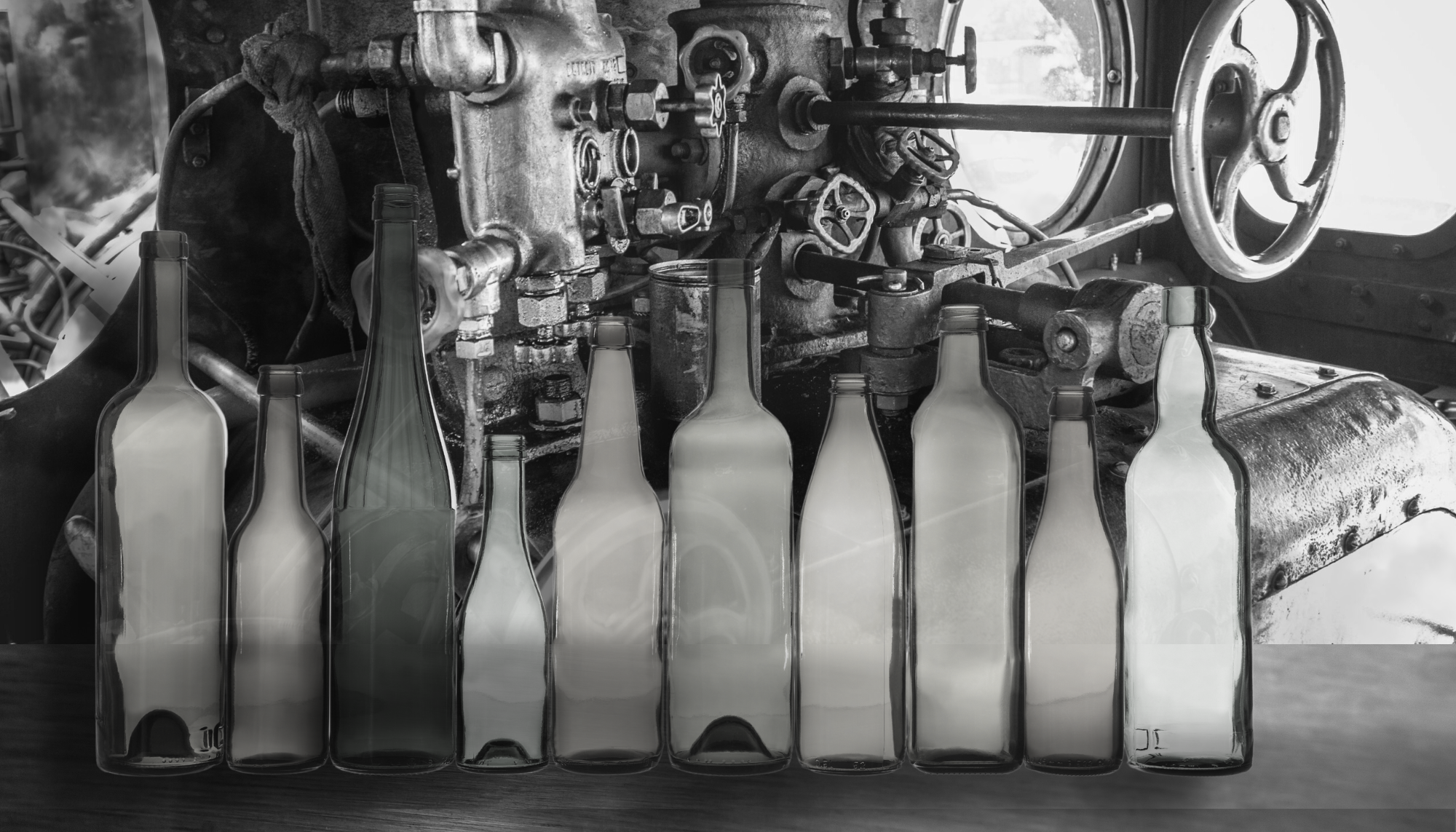 Home > News
Home > NewsGlass packaging feels timeless for a reason. With an unbroken line of use dating back to the ancient Egyptians, glass goes way (way) back. We’ll never know who originally came up with the bright idea to heat sand to over 3000°F until it turned transparent and fused together, but that’s some on-fire creativity.
Glass contains inherent beauty, and early glass was used for decorative objects like jewelry and amulets, even back to the Mesopotamians. The Egyptians used a technique called core-forming to create glass cups, jars, and other handy containers.
The use of glass spread throughout the ancient world like any smashing product, and techniques evolved with it. The Romans appear to be the first civilization to invent blown glass, allowing for the creation of more intricate shapes and designs. During the Roman Empire, glass containers were commonly used to store and transport liquids like wine, olive oil, and perfumes. Glassmaking became a big industry and sought-after export, and glass containers spread throughout the Empire. Handblown and expensive, glass bottles were accessible only to the wealthy class.

In the Middle Ages, glass containers played an important role in the storage and conveyance of medicines and alchemist concoctions. Made of clear or colored glass, they came in a range of shapes and sizes. Small vials—bottles with a rounded bottom and long neck—stored liquids like oils, tinctures, and extracts. They were sealed with a cork or stopper to hold the contents in. Ampoules—bulb-shaped bottles with a narrow neck—stored and transported holy water, oils, and sacred substances. They were often labeled with religious symbols and inscriptions.

The next major advancement in glass packaging came in the 17th century with the invention of lead crystal glass. Made by adding lead oxide to molten glass, it reflects light in a way that creates a sparkling, luminous effect. Even better for container buffs, this high refractive index made lead glass more durable and resistant to chipping and breaking. Lead glass can be made thinner and lighter without sacrificing strength, so these convenient containers were easier to handle. The smooth surface is also less porous than regular glass, so they’re less likely to absorb odors and flavors. For manufacturers (and drinkers) of wine and spirits, lead glass containers quickly became a go-to.

Handblown by skilled craftsmen, glassmaking remained labor-intensive and slow-going for hundreds of years; until the Industrial Revolution in the early 20th century revolutionized glass bottle manufacturing too. The automatic bottle making machine came on the scene in 1903. Using a series of molds and machinery to blow and shape standardized glass bottles, this device increased the speed and efficiency of glass bottle production. It also opened up the possibility of producing bottles in a wider range of uniform sizes and shapes—all in large quantities at a reduced cost. Innovations in the design and functionality of glass containers took off in pace until…

Glass met its match in the mid-20th century, when plastic quickly dominated the scene. Cheaper and lighter than glass, plastic containers were more cost-effective to manufacture and transport. Glass remained a staple only for high-end products like wine and liquor, where the quality and appearance of the packaging still reigned supreme.

The move to sustainable packaging, however, is bringing glass containers back into vogue. Infinitely recyclable without losing integrity, glass is considered by many to be an eco-friendlier choice than plastic. Many companies now use glass packaging for a wide range of products, including food, beverages, and cosmetics.
The staying power of glass containers throughout history is clear. Century after century, the beauty and integrity of glass holds up. Now available in an infinite range of shapes, sizes, and transparent colors, glass containers speak to a quality product. Just as they did in ancient Rome.